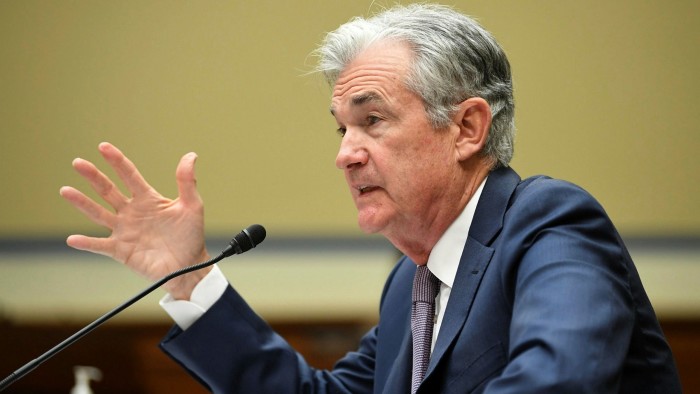Expect a taming of the bond market tantrum

Roula Khalaf, Editor of the FT, selects her favourite stories in this weekly newsletter.
The writer is a portfolio manager on the US government securities team at DoubleLine Capital
Traders betting on a further sustained rise in interest rates might want to listen more closely to what the US Federal Reserve is saying.
There have been a lot of comparisons made in markets between recent volatility and the so-called Taper Tantrum in 2013 when rates rose sharply after the Fed signalled it might begin to scale back bond purchases.
In my view, the recent rise in interest rates has been driven by a confluence of the unwinding of trade positions caught offside in the Treasury market, market illiquidity and other technical factors.
It has been out of line with economic fundamentals, not been supported by changes in data on growth or inflation, the rollout of the Covid-19 vaccines or other developments. Furthermore, the rise is very much at odds with the Fed’s own policy stance and the recent statements of members of the policy-setting Federal Open Market Committee.
There are strong similarities between the backdrop in 2013 and today. Both took place as the economy was recovering from recession. Unemployment was falling but still elevated. Inflation was tame. Fed policy rates were at the zero lower bound, and the Fed was buying Treasuries to provide additional support.
However, the Fed’s policy outlook was very different in 2013 versus today. The third round of its support programmes known as quantitative easing was launched in late 2012. The December 2012 FOMC minutes already disclosed members’ expectations of winding down of QE in late 2013.
Then in May of 2013, Ben Bernanke, the Fed chairman at the time, stated that the committee could take steps to reduce the pace of asset purchases “in the next few meetings”. The market interpreted those remarks to mean withdrawal of policy accommodation as imminent. The signal to reduce market exposure had seemingly been given. The Taper Tantrum was unleashed.
In contrast, the current Fed is explicitly committed to achieving maximum employment, and it has pledged to hold off any rate increases until realised inflation has reached 2 per cent and is on track to average 2 per cent.
Fed chair Jay Powell has dismissed any possibility of tapering asset purchases in 2021. He has said that he expects inflation to remain contained, that the FOMC will not react to what it sees as transitory inflation and that it could take three years to reach the 2 per cent average inflation target.
Powell and other FOMC members have been forceful and consistent in adhering to this policy framework. The so-called dot plot, in which individual Fed officials map their forecasts for interest rates, released for the December 2020 FOMC did not expect the first rate rise until at least the end of 2023. More recent Fed speak confirms its relevance.
Yet the recent upheaval has radically brought forward the market-implied expectations of the timing of the Fed’s first rate increase. That first rise is expected in the first quarter of 2023, according to market pricing on February 26. Just a week earlier, a first increase was expected in the third quarter of 2023; at the end of January, a first rise in the fourth quarter of 2023.
The recent jump in both nominal and inflation-adjusted Treasury yields also is incompatible with the Fed’s objective of maximum employment.
Sharply rising rates, falling inflation expectations and rising volatility will, at some point, be viewed by the FOMC as significant headwinds to the recovery and to achieving its maximum (or full) employment mandate. FOMC members have given no hint of when or how they may push back against current trends. In fact, Powell and others have recently said they are not concerned with the recent rate rise.
The market recovery since the initial spike suggests Fed officials have some breathing room before their hands-off stance is put to the test. But should the sell-off resume, and especially in a disorderly fashion, I expect the committee’s rhetoric will shift.
The European Central Bank, the Reserve Bank of Australia and other central banks have already expressed concern. And if a shift in rhetoric proves insufficient to stem a resurgent rise in rates, I expect the Fed will increase support — most likely by increasing the size or average maturity of its asset purchases.
I continue to look for the 10-year Treasury yield to end 2021 below 2 per cent compared with the current rate of about 1.5 per cent. Inflation expectations — measured as the gap between nominal and inflation-adjusted 10-year Treasury yields — now fully price in the Fed’s 2 per cent average inflation target, but will moderate.
Comments